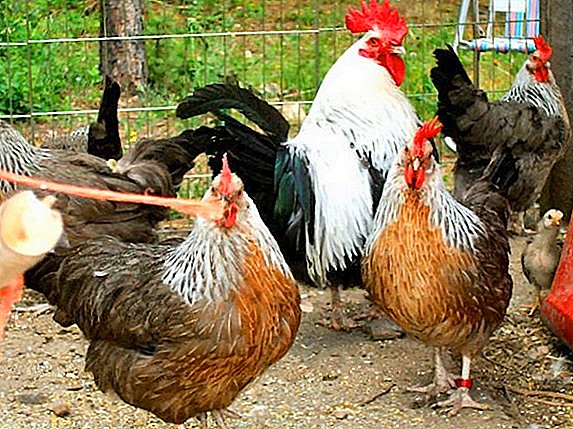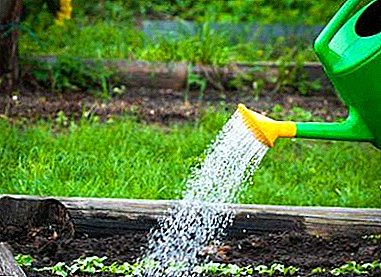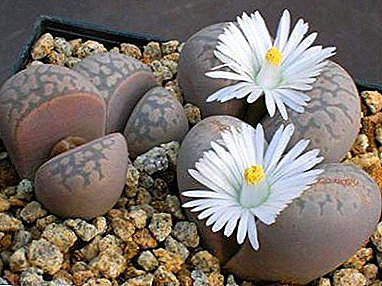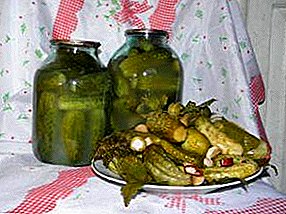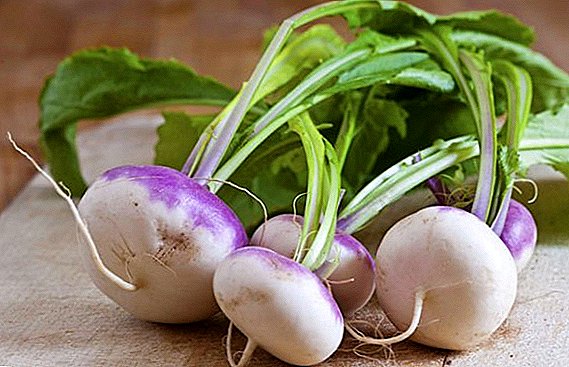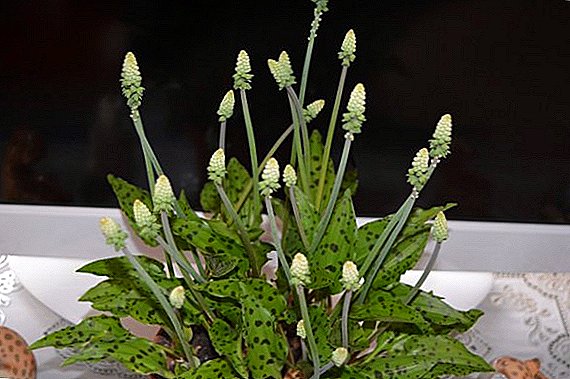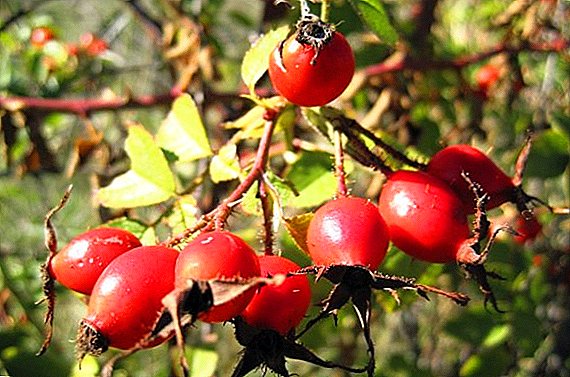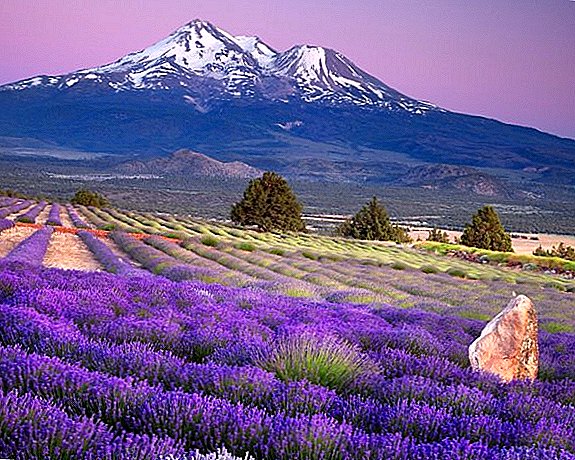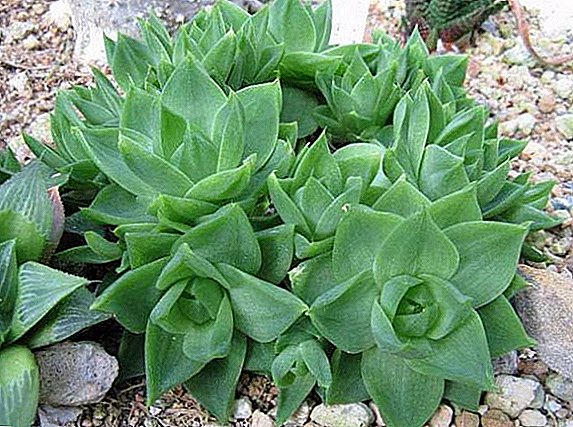 The flowers, known as havortia, are a whole family of dwarf succulent plants.
The flowers, known as havortia, are a whole family of dwarf succulent plants.
Such perennials are popular because of their unpretentiousness. Today we consider their main types.
Haworthia Pearl
The plant is characterized by the absence of stems. Leaves form a growth near the root, called a rosette. In length they reach 8 cm, in width - from 1.5 to 2.5 cm. The shape is an oval pointed at the edge. To the touch - hard, slightly convex at the bottom, at the edges there are large white (less often pearl) dots scattered in random order.
 Haworthia Pearl has a long peduncle, reaching up to 0.5 m (there are also large ones). Flowers of green color appear in the axils of the upper leaves of racemes.
Haworthia Pearl has a long peduncle, reaching up to 0.5 m (there are also large ones). Flowers of green color appear in the axils of the upper leaves of racemes.
The view is considered highly decorative. When transplanting take child sockets, although it is possible to separate part of the main one. Some gardeners propagate the flower with a leaf planted in sand or loose soil.
Important! Do not overmoisten havortiu. If water gets on the leafy outlet (especially in winter), the plant may die.Watering is performed after the appearance of the first roots (this is at least three weeks later). In this regard, havortia pearl-bearing is not unique, since all the succulents of this kind are planted in this way.
Havortia winding

Sometimes it is confused with a small aloe, although in this case 15 cm in height is considered a normal figure. To match and small dark green leaves with frequent small warts. The leaves have a somewhat unusual, as if angled, shape, due to which this species of havortiya has a unique appearance.
On loose brushes of a thin peduncle, small flowers appear, which, depending on the conditions, can be "painted" in different shades of white.
Havortia is sticky
 A height of up to 20 cm (with a minimum of 10 cm) is considered common for this species. The leaves are oval in three rows and differ in small sizes not more than 2.5 cm in length, and up to one and a half in width. Their top bends slightly back, and the top side is slightly depressed.
A height of up to 20 cm (with a minimum of 10 cm) is considered common for this species. The leaves are oval in three rows and differ in small sizes not more than 2.5 cm in length, and up to one and a half in width. Their top bends slightly back, and the top side is slightly depressed.
Did you know? "According to science" species Haworthy has only 45 types of plants. Other - their derivatives (in nature) and cultural hybrids.Such a houseplant from the range of havortia is valued precisely for its "dense" appearance, created by the leaves. In culture, there are many forms that differ in color and number of warts. Some lines have leaves with a white color on the edges.
Haworthia scaphoid
 The most common type. The plant is remarkable multiple rosettes, in which the leaves have gathered. The leaves themselves look fleshy, but soft to the touch, have the shape of a boat. May be both bright green and dimmer in color. One outlet in conjunction with the side shoots can reach up to 20 cm in diameter (for a single, this figure does not exceed 10 cm).
The most common type. The plant is remarkable multiple rosettes, in which the leaves have gathered. The leaves themselves look fleshy, but soft to the touch, have the shape of a boat. May be both bright green and dimmer in color. One outlet in conjunction with the side shoots can reach up to 20 cm in diameter (for a single, this figure does not exceed 10 cm).
Haworthia scaphoid has a well-developed long pedicle, on which pale-white flowers periodically appear.
Havortiya limolistnaya
"Spread" look. The hard, triangular leaves, have a color in a dark green tone. At the base of the sheet can reach a width of 4.5 cm. The sockets themselves are small and about 10 cm in diameter.
Important! So that the flowers do not lose their decorative appearance, do not keep them in the shade.
 To distinguish such a flower can any - from both sides of the sheet is covered with solid narrow ribs running across. They are formed by numerous warts.
To distinguish such a flower can any - from both sides of the sheet is covered with solid narrow ribs running across. They are formed by numerous warts.
This room havortia, with proper care, "throws out" milky-white flowers.
Haworthia Mougana
Refers to the so-called "window" species. It owes its unusual appearance to cylindrical leaves with transparent "windows" at the tip. There are also hybrids with an ornate pattern on the leaf, but this is exotic for our gardeners.
 The leaves are the same in height, green by the standard, although the hybrids may have a different color.
The leaves are the same in height, green by the standard, although the hybrids may have a different color.
Such havortia, although it differs from its “brethren” in appearance, shows flowering just like other plants of this genus — occasionally small flowers appear on the peduncle, a bit like a spikelet.
Havortiya striped
These plants do not have a trunk. The rosette consists of narrow (up to 1.5 cm) leaves of the lancet type, reaching a length of 5 cm. They are characterized by a strongly convex shape, the surface itself is smooth and green.
Did you know? South Africa is considered the birthplace of these plants. The first havortias were brought to Europe at the turn of the XVI - XVII centuries.
 On the inner side of the leaf white tubercles are plentifully melted, merging into saturated bands.
On the inner side of the leaf white tubercles are plentifully melted, merging into saturated bands.So, we have already figured out what havortiya striped is visible, now let's see how it blooms. The flowers themselves are kind of inconspicuous, white. Their method of "grouping" is interesting - in a healthy plant they gather into a kind of panicle.
Havortiya drawn
It looks like the view just mentioned, although it does not have such a pronounced decorative effect. There are no large white dots on it; they are replaced by small white (or green) warts of convex shape.
 Numerous leaves are narrow (1 - 1.5 cm), but rather long (up to 7 cm). They are distinguished by a lance-like shape and upward direction, which slightly “slims” the flower.
Numerous leaves are narrow (1 - 1.5 cm), but rather long (up to 7 cm). They are distinguished by a lance-like shape and upward direction, which slightly “slims” the flower.
By the nature of flowering, havortia drawn is similar to its closest relative, although dull-white flowers are usually scattered.
Haworthia Reinward
Plant with pronounced vertical growth. Height - within 10 - 15 cm. Medium-sized lancet leaves (3.5 x 1.5 cm) grow in a spiral. They are located tightly, have a dark color, on the inside reaching almost black. There are also bright white dots, while there are almost no warts on top.
Important! For planting choose flat containers with developed drainage. This applies to all succulents.
 This havortia requires special care, it is sensitive to the change of the light mode. Receiving a little light, the flower changes the color of the leaves and they brighten, becoming green, losing the "blackness" inherent in a healthy plant.
This havortia requires special care, it is sensitive to the change of the light mode. Receiving a little light, the flower changes the color of the leaves and they brighten, becoming green, losing the "blackness" inherent in a healthy plant.Experienced florist valued hybrid "zebrina". In this variety, white dots have a large size, which gives the plant a special, elegant look. Abroad, even more spectacular varieties have been bred, but there is a lot of such hawort of Reinwardt.
Haworthia Retuz (blunted)
 The name of the flower was due to the leaves dulled on the edge. They are dense and located rather densely, forming many sockets with a diameter of up to 15 cm. On the outer side, white dots are densely set up, forming longitudinal stripes. Inside they are not, except that there are single warts.
The name of the flower was due to the leaves dulled on the edge. They are dense and located rather densely, forming many sockets with a diameter of up to 15 cm. On the outer side, white dots are densely set up, forming longitudinal stripes. Inside they are not, except that there are single warts.
The color of the leaves can be different: from the usual green to red (approximately like a brick).
Did you know? In nature, havortias grow on stony slopes or in a plain, under the shade of higher plants.Note that havortia retuz responds sharply to a lack of light, its lamina becomes reddish. If the hybrid was originally green, urgently move it to the window.
Havortia chess (mosaic)
Such plants have almost no stems, with a developed rosette. Sheets, having the shape of an oblong oval, are placed on it in a spiral. Their length is up to 3.5 cm with a width of 2-2.5 cm. At the edges they are pointed, slightly curved outward. On a thick sheet visible transverse stripes of light color (counting from 3 to 7), which, as it were, create a mesh. On a sunny day, it shimmers in dark green.
 Chevortia chess is popular because of its frequent flowering, as it can produce flowers several times a season. During such periods, small white-green buds appear, grouped into a sparse panicle.
Chevortia chess is popular because of its frequent flowering, as it can produce flowers several times a season. During such periods, small white-green buds appear, grouped into a sparse panicle.
All flowers of the mentioned species are succulents related to cacti. True, during the period of growth, they require regular watering, which ceases by winter. They love light, and direct rays do not harm the leaves. There are no special requirements for the soil, except that in the warm season, once a month, they make the same top dressing as for cacti. Frequent transplants are not needed.
Important! Such flowers are resistant to pests. Aphids on leaves - a rarity, and can move only with other, already affected plants.Haworthia has other qualities, as indicated by some signs. It is believed that this plant is able to transform the energy of a person, directing him to the path of action. If you put on the window a few of these "transformers", then the goal will be achieved. As far as this is true, our readers will be able to find out for themselves by choosing the most suitable flower for themselves.


